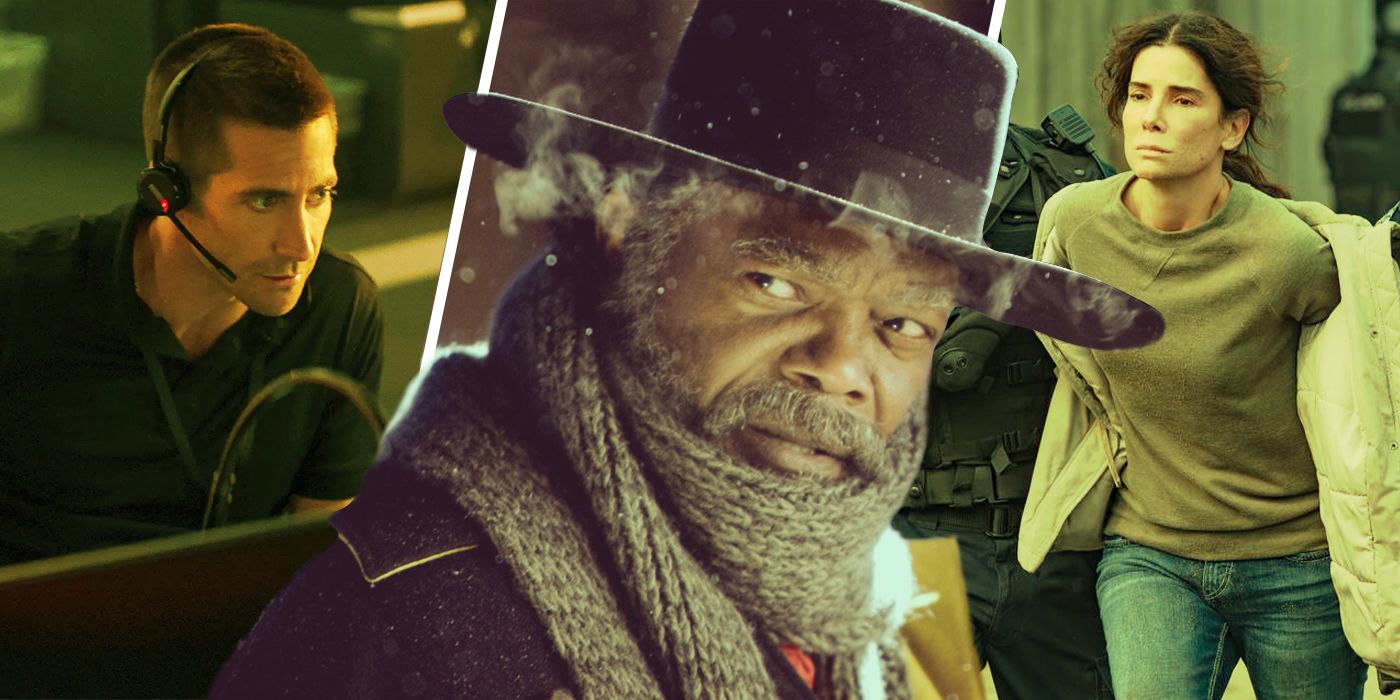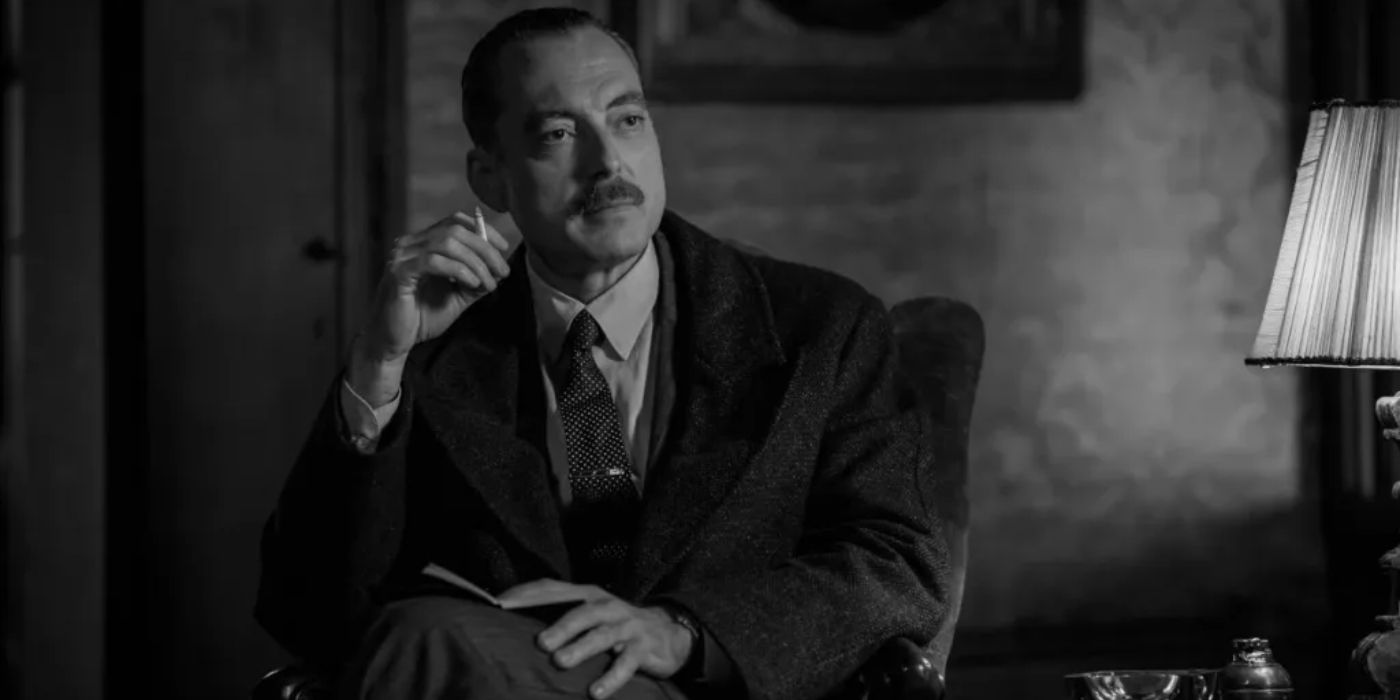Summary
- ‘Ripley’ hits Netflix with Andrew Scott as Tom Ripley in the newest adaptation of Patricia Highsmith’s classic crime novel.
- While staying true to the novel, the ending of ‘Ripley’ on Netflix differs from the 1999 movie in key details and final moments.
- Season 2 of ‘Ripley’ leaves viewers hanging on a cliffhanger, with Inspector Ravini potentially continuing the pursuit of Tom Ripley.
New to Netflix on April 4, 2024, Ripley is the third adaptation of Patricia Highsmith’s acclaimed 1955 novel The Talented Mr. Ripley. The story concerns Tom Ripley (Andrew Scott), a wily forger and con man who steals the identity of the wealthy European playboy Dickie Greenleaf (Johnny Flynn) and lives a life of luxury. Although it’s the first TV translation of the classic crime story, the Netflix original series joins the 1960 French film Purple Noon and the 1999 American movie The Talented Mr. Ripley as fictional adaptations.
However, while each mostly remains faithful to Highsmith’s novel, several significant differences regarding the ending can be found. In particular, the final moments of Ripley’s grand scheme conclude on a much different note in the 1999 film and the 2024 TV show. For those interested in the chief differences between the two acclaimed adaptations, it’s time for a side-by-side comparison between Ripley’s criminal endeavors and how faithful they remain to Highsmith’s novel.
Ripley
- Release Date
- April 4, 2024
- Seasons
- 1
What is The Talented Mr. Ripley?
Published in November 1955, The Talented Mr. Ripley is a crime novel by Patricia Highsmith. The acclaimed psychological thriller concerns Tom Ripley, a small-time con artist and grifter scraping by in New York City in the late 1950s and early 1960s. Ripley’s dead-end life changes for the better when he is hired by shipping tycoon Herbert Greenleaf. Herbert believes Ripley attended school with his son, Dickie Greenleaf, whose whereabouts in Europe are unknown. Herbert hires Ripley to find Dickie, paying for his travel expenses and giving him a salary for his efforts.
Once Ripley locates Dickie and his friend Marge Sherwood in Italy, Ripley slowly ingratiates his way into their lives. Upon witnessing the lap of luxury Dickie lives in, Ripley slowly schemes to steal Dickie’s identity and live his lavish lifestyle of wealth and privilege. In Highsmith’s novel, the most crucial event occurs off the coast of San Remo, where Ripley murders Dickie in cold blood on a small fishing boat with an oar.
After killing him, Ripley takes Dickie’s possessions, throws his anchor-tied body into the water, and deliberately sinks the boat. Ripley continues to live off Dickie’s trust fund, enjoys his wealthy lifestyle, and constantly changes his disguise to resemble Dickie. Meanwhile, Ripley communicates with Dickie’s friends and family to assure them he’s still alive.
In both Anthony Minghella’s 1999 film adaptation and Steve Zaillian’s 2024 Netflix TV show, Highsmith’s story is faithfully told up to this point. The big difference in the TV and film adaptation comes during the final act. While Ripley ultimately gets away with his criminal charade, a few minor story beats have been altered from the text. In addition to Ripley’s ambiguous fate, some details regarding Dickie’s corpse, the murder weapons, and the boat disposal stand out.
Differences Between Ripley and The Talented Mr. Ripley
Although Ripley faithfully retells Highsmith’s novel almost verbatim, notable differences become clear during the fatal boat ride. In the novel and the 1999 movie, Ripley (Matt Damon) sinks a small fishing boat underwater following Dickie’s (Jude Law) murder. In the show, Ripley attempts to burn the boat with petroleum but only partially succeeds. After his plan fails, Ripley stacks rocks in the boat until it submerges underwater. In the novel, movie, and TV show, Ripley continues to live as Dickie in an apartment in Rome and Venice as the final act approaches. However, in the movie, Dickie’s corpse is found by the police. In the TV show, Dickie’s corpse is never found.

Andrew Scott’s 10 Greatest TV Performances
Andrew Scott has become one of the most interesting actors in the industry. Here’s where everything started: on TV.
Another minor difference between Ripley and The Talented Mr. Ripley relates to the death of Dickie’s longtime friend, Freddie Miles. When Freddie becomes suspicious of Ripley’s activity and confronts him about Dickie’s whereabouts in Rome, Ripley murders him in cold blood inside his apartment. In the novel, Ripley bludgeons Freddie to death in the head with a big glass ashtray.
However, in the movie, Ripley fatally bashes Freddie (Philip Seymour Hoffman) with the head of a marble statue. In the TV show, Ripley bludgeons Freddie (Eliot Somner) to death with a paperweight. Although the murder weapon has been changed, the Roman location and the way Ripley murders Freddie more or less remain the same in all three adaptations.
The Ending of Ripley vs. The Talented Mr. Ripley
The most substantial difference between Ripley and The Talented Mr. Ripley comes during the finale. In the novel, Ripley convinces Dickie’s family that Dickie murdered Freddie before committing suicide. Ripley ends up sailing to Greece after forging Dickie’s will and inheriting his fortune. Ripley gets away with his crimes and secures enough money to enjoy a wealthy life. However, his life of luxury is marred by the fear and paranoia of being caught as he constantly looks over his shoulder.

Best Netflix Thrillers to Watch Right Now, Ranked
The epic streaming giant Netflix is no stranger to exciting and cutting-edge content, and these great thriller movies are no exception.
In the 1999 movie, Ripley also ends up in Greece, but the story veers from the novel quite dramatically. In the final moments, a friend of Marge named Peter Smith-Kingsley joins Ripley on the ocean liner to Greece. Upon confronting Ripley about posing as Dickie, Ripley apologizes to Peter for lying to him before fatally strangling him on the boat. The movie ends with Ripley returning to his cabin alone to ponder his murderous actions.
The Netflix Miniseries Ends on a Cliffhanger
In Ripley, the story concludes in Venice instead of Greece. Dickie’s body is never found, and his family continues to search for the “fugitive playboy.” In Venice, Herbert Greenleaf arrives and accepts that his son Dickie killed himself and Freddie as a result of being a failed artist, unaware that Ripley orchestrated the entire ruse. Although Ripley gets away with his crimes happy and wealthy, the TV ending leaves viewers dangling on a cliffhanger. Marge Sherwood sends a copy of her book to Inspector Ravini (changed from Inspector Roverini in the movie), who is mortified when he sees a picture of the real Dickie Greenleaf.
The implication is that if Season 2 of Ripley gets renewed, Inspector Ravini will continue to pursue Ripley across Europe. This slightly differs from the novel and movie, which depicts Ripley continuing his trip to Greece with a tinge of melancholy after getting away with his elaborate crime spree. In any event, Highsmith’s source novel is so rich that few story beats need to be changed to retain the dramatic impact of Ripley’s criminal endeavors.
The success of The Talented Mr. Ripley led to the “Ripliad,” a series of five novels Highsmith had published between 1955 and 1991. Although Oscar-winning screenwriter Steve Zaillian (Schindler’s List) changed a few story specifics to accommodate an 8-episode TV format, they remain faithful to the spirit of Highsmith’s landmark crime novel. Stream on Netflix.




